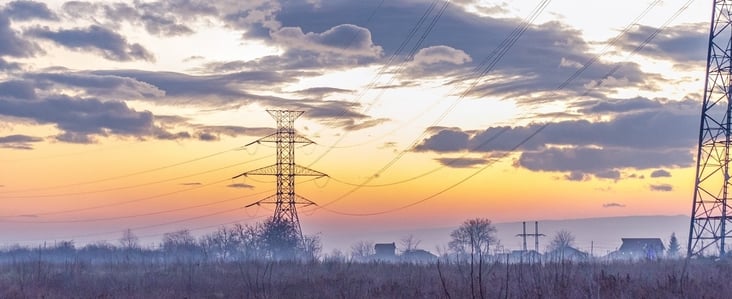
Not too long ago, the media was heralding a possible end to the current era of utilities, calling them “dinosaurs” and debating the speed with which the “utility death spiral” would overtake them. Over the past few years, it’s become clear that utilities aren’t going anywhere anytime soon, but the utility business model is undergoing significant and permanent changes – driven by advanced energy. On that point, this week we saw a lot of thinking, and doing, in the news.
In essence, utilities are faced with the same responsibility today as ever: Keeping the lights on, no matter what. But the energy industry and information and communications technology are changing at breakneck speed. Utilities are being forced to confront these challenges while balancing the interests of their stakeholders. Last week, MIT Energy Initiative released a report called “Utility of the Future” in response to the industry in transition.
Jesse Jenkins, an MIT doctoral student and one of the researchers on the report, sat down with David Roberts of Vox to discuss the nitty gritty details. Central to the changing utility context are new options for consumer choice and wider availability of information:
“Individual households and businesses are starting to face a whole new set of options for how they provide or consume electricity, everything from rooftop solar panels to electric vehicles to smart thermostats. That unprecedented degree of choice requires a new set of policies and regulations, to make sure that people are making decisions that are smart for themselves and also help lower costs or improve the performance of the power system as a whole.”
Already, we are seeing utilities face this challenge. Last year, consumer investments in distributed generation cancelled 12 transmission projects in Pacific Gas & Electric territory, saving ratepayers $192 million. Meanwhile, large corporate buyers are looking for ways to purchase advanced energy to power their operations: Fully 71% of the Fortune 100 and 43% of the Fortune 500 have set renewable energy or sustainability targets.
Just this week, The Home Depot signed a power purchase agreement with a wind farm in Texas owned and operated by EDP Renewables, an AEE member. Elsewhere in Texas, another AEE member, Invenergy, is helping a very different kind of customer, the city of Denton, achieve its goal to nearly double the amount of electricity generated from renewable resources from 40% to 70% by 2019.
As we covered earlier this year, Michael Liebreich and Angus McCrone of Bloomberg New Energy Finance argue that, in many cases, the price of renewable energy has blown past parity with fossil fuels to provide the cheapest power available:
“The old rules were all about locking in cheap base-load power, generally from coal or hydro plants, then supplementing it with more expensive capacity, generally gas, to meet the peaks. The new way of doing things will be about locking in as much locally-available base-cost renewable power as possible, and then supplementing it with more expensive flexible capacity from demand response, storage and gas, and then importing the remaining needs from neighbouring grids.”
We are already seeing this take place. As we reported last week, AEE members First Solar and utility committee participant CAISO have demonstrated that peaker plants aren’t the only option for grid services. The company and the grid operator released a report based on a test last summer, when, over a series of days, a First Solar facility essentially acted as a peaker plant to provide the three reliability services needed to reliably integrate higher levels of renewable resources: frequency control, voltage control and ramping capability or flexible capacity.
Meanwhile, also in California, “Tesla’s Battery Revolution Just Reached Critical Mass.” As we teased last week, the AEE member’s batteries are officially installed in the Southern California Edison plants, and this week we can report the three battery storage plants are going online all at once. The plants, built by Altagas Ltd., AES Corp. (AES Storage also an AEE member), and Tesla, would each individually be the largest battery storage facility ever. Together, they make up 15% of all battery storage capacity installed last year.
No discussion of the utility revolution would be complete without Hawaii. Sure enough, in January, AES and the Kauai Island Utility Cooperative announced a plan to build a solar-plus-storage peaker plant. The project will combine 28 MW of solar capacity with 20 MW of storage capacity. The planned plant still needs to be approved by state and local regulators, but the plans show there’s more than one way to meet peak demand.
“The project delivers power to the island’s electrical grid at significantly less than the current cost of oil-fired power and should help stabilize and even reduce electric rates to KIUC’s members," KIUC President and CEO David Bissell said in a statement. "It is remarkable that we are able to obtain fixed pricing for dispatchable solar-based renewable energy, backed by a significant battery system, at about half the cost of what a basic direct-to-grid solar project cost a few years ago.”
Keep up to date with all utility model updates by subscribing to our newsletter, available free at the link below!
